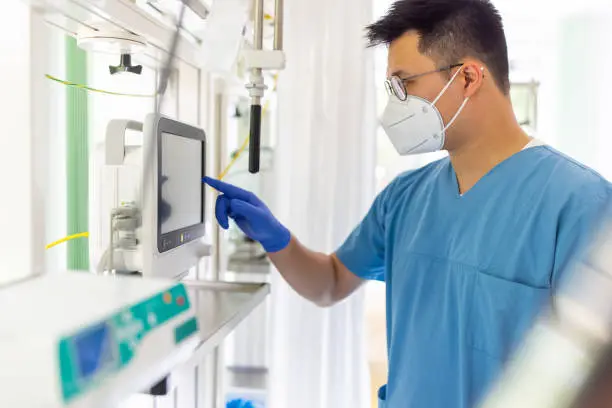How Modern Heart Specialist Hospitals are Reducing Cardiac Emergency Fatalities
Cardiac emergencies strike without warning, claiming lives within minutes if proper intervention isn’t available. The difference between survival and tragedy often depends on how quickly patients can receive specialised care. Modern healthcare facilities have revolutionised emergency cardiac treatment, dramatically improving survival rates through the use of advanced technology and streamlined protocols.
Today’s heart specialist hospital in Ranchi has transformed cardiac emergency response through cutting-edge diagnostic tools and immediate intervention capabilities. These specialised centres maintain 24/7 readiness with dedicated cardiac teams, ensuring patients receive life-saving treatment within the critical golden hour when every second counts.
The Growing Threat of Sudden Cardiac Events
Alarming Statistics Behind Cardiac Emergencies: Recent studies reveal that cardiac emergencies affect over 17 million people globally each year, with survival rates varying dramatically based on response time and treatment quality. Many victims appear healthy before their sudden collapse, making early detection and rapid response absolutely crucial for positive outcomes.
Risk Factors Creating Silent Dangers: Modern lifestyle factors including stress, poor diet, and sedentary behaviour contribute to rising cardiac emergency cases. High blood pressure, diabetes, and obesity create perfect conditions for heart attacks and sudden cardiac arrest, often striking people in their most productive years without prior warning signs.
Revolutionary Response Systems in Advanced Cardiac Centres
Immediate Triage and Assessment Protocols: Specialised cardiac hospitals have developed sophisticated triage systems that identify potential heart emergencies within minutes of patient arrival. Trained personnel use standardised assessment tools to quickly categorise patients, ensuring those with time-sensitive conditions receive immediate attention from cardiac specialists rather than general emergency staff.
Coordinated Team Activation Procedures: Modern facilities employ automated alert systems that simultaneously notify cardiologists, cardiac surgeons, and support staff when emergencies arrive. This coordinated approach eliminates communication delays and ensures complete cardiac teams are prepared for immediate intervention, significantly reducing door-to-treatment times.
Technology Transforming Cardiac Emergency Care
Portable ECG and Diagnostic Innovations: Advanced portable electrocardiogram devices now provide instant cardiac rhythm analysis, allowing medical teams to diagnose heart attacks and arrhythmias within seconds of patient contact. These sophisticated devices transmit real-time data to cardiac specialists, enabling treatment decisions before patients even reach the hospital premises.
Catheterisation Laboratory Capabilities: Modern cardiac catheterisation laboratories operate around the clock, equipped with advanced imaging systems that visualise blocked arteries in real-time. These facilities can perform emergency angioplasty procedures within minutes, physically reopening blocked vessels and restoring blood flow to damaged heart muscle before permanent damage occurs.
Key technological advances improving cardiac emergency outcomes include:
- Advanced cardiac monitoring systems that detect rhythm abnormalities instantly and alert medical staff automatically.
- Portable ultrasound devices that assess heart function and identify complications like fluid accumulation around the heart.
- Computerised decision support systems that guide treatment protocols based on patient-specific factors and current medical guidelines.
- Telemedicine capabilities that connect remote locations with cardiac specialists for immediate consultation and guidance.
Specialised Cardiac Intensive Care Units
Advanced Monitoring and Life Support: Modern cardiac ICUs feature sophisticated monitoring equipment that tracks multiple vital parameters simultaneously, detecting subtle changes that might indicate developing complications. These units maintain higher staff-to-patient ratios than general ICUs, ensuring continuous expert observation during critical recovery periods following cardiac emergencies.
Mechanical Circulatory Support Systems: Advanced cardiac units now employ mechanical devices like intra-aortic balloon pumps and ventricular assist devices that can temporarily support failing hearts. These life-saving technologies buy precious time for damaged heart muscle to recover or for patients to receive definitive treatments like surgery.
Training and Protocol Standardisation
Continuous Staff Education Programmes: Leading cardiac centres invest heavily in ongoing staff training, ensuring medical teams stay current with rapidly evolving treatment protocols and emergency procedures. Regular simulation exercises help staff maintain peak performance levels, practising complex scenarios in controlled environments before facing real emergencies.
Evidence-Based Treatment Protocols: Modern facilities follow standardised treatment algorithms based on the latest clinical research, ensuring patients receive optimal care regardless of which physician initially treats them. These protocols eliminate guesswork and ensure consistent, high-quality treatment across all shifts and circumstances.
Conclusion
The transformation of cardiac emergency care represents one of medicine’s greatest success stories, with modern heart specialist hospitals achieving survival rates that seemed impossible just decades ago. Through advanced technology, specialised training, and coordinated care protocols, these facilities continue saving lives that would have been lost to cardiac emergencies. If you’re concerned about cardiac health or have risk factors for heart disease, consult with healthcare professionals to understand your options and ensure you know where to seek emergency cardiac care in your surrounding area.
Also Read-Dental and Oral Health for Veterans: Benefits, Prevention, and Wellness

